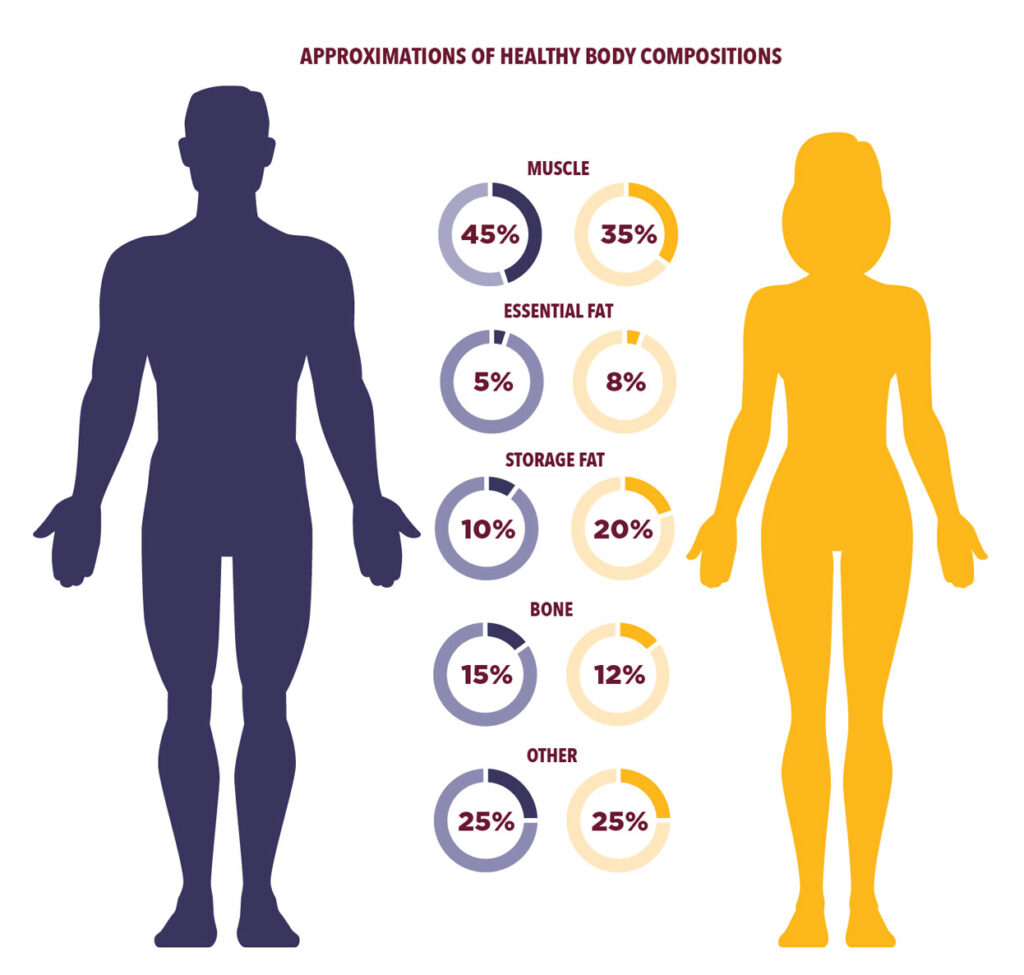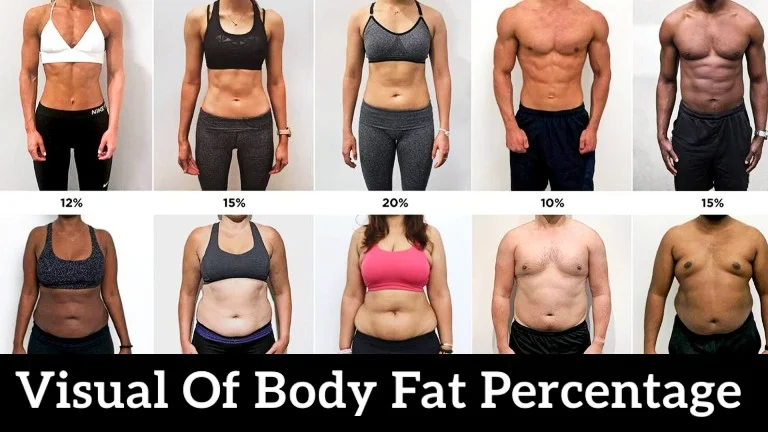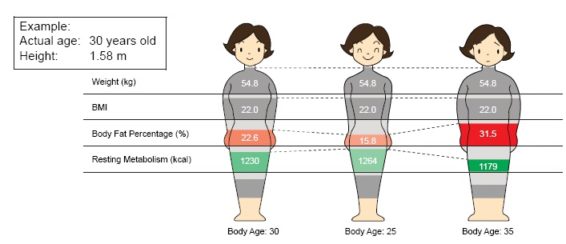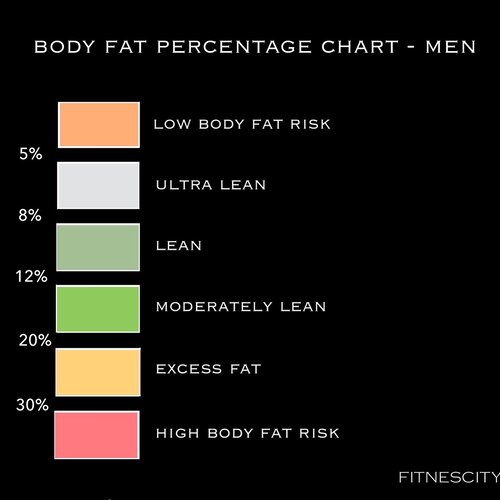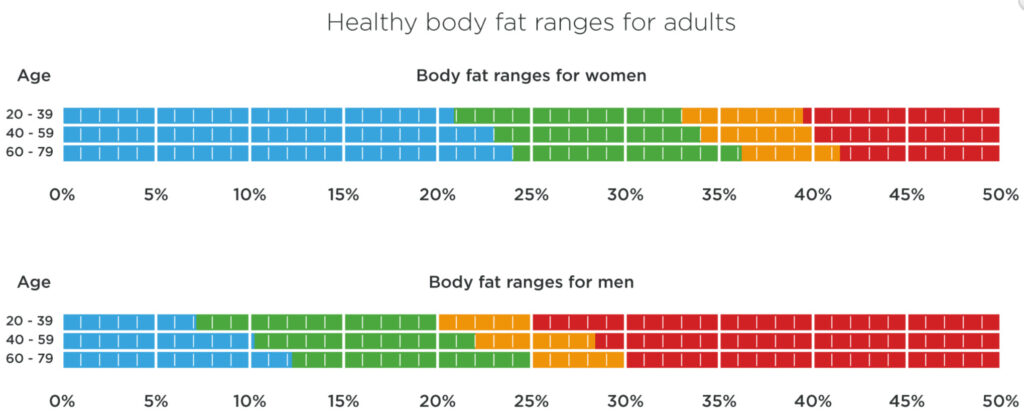
Understanding Body Fat Percentage and Its Importance for Fitness
Understanding body fat percentage is crucial for anyone looking to improve their overall fitness. Body fat percentage serves as a valuable indicator of overall health and can help individuals determine whether they have a healthy amount of body fat or if they need to make changes to their lifestyle. Lean mass, which includes bones, organs, and muscle, is essential for proper bodily functions, while fat can be either essential or nonessential. It is generally recommended that men have a body fat percentage between 10-24%, while women should aim for a percentage between 20-30%. However, it is important to note that at-home scales that measure body fat may not be very accurate and can have a large margin of error. Fortunately, there are different methods available to estimate body fat percentage, such as tape measure calculations, bioelectric impedance, DEXA scan, air displacement plethysmography, skinfold calipers, and ultrasound. It’s also important to understand that body fat percentage is not the same as BMI, which only takes into account height and weight and does not provide information about body fat levels. Ultimately, focusing on proper nutrition and exercise is key to improving body composition and achieving a healthy body fat percentage.
Table of Contents
ToggleUnderstanding Body Fat Percentage
Introduction to Body Fat Percentage
Body fat percentage is a useful indicator of overall fitness. It provides valuable information about an individual’s body composition and can help determine the amount of fat in relation to lean muscle mass. Understanding body fat percentage is crucial for those seeking to improve their fitness and overall health.
Definition of Body Fat Percentage
Body fat percentage refers to the proportion of fat in the body in relation to the total body weight. It is expressed as a percentage and is a more accurate measure of body composition than simply assessing weight alone. Unlike body mass index (BMI), which only takes into account height and weight ratio, body fat percentage provides insight into the actual amount of fat present in the body.
Importance of Body Fat Percentage for Fitness
Body fat percentage is an essential parameter in assessing an individual’s fitness level. It helps determine the amount of fat versus lean mass in the body and can provide insight into overall health. By understanding body fat percentage, individuals can make informed decisions about their exercise routines, dietary choices, and overall lifestyle to improve their fitness and reduce the risk of health problems associated with excess body fat.
Lean Mass and Fat
Lean mass refers to the weight of everything apart from fat in the body. It includes bones, organs, and muscle. Fat, on the other hand, can be classified as essential or nonessential. Essential fat is necessary for proper bodily functions, such as insulation and hormone regulation. Nonessential fat, also known as excess fat, is the accumulation of fat that exceeds the body’s needs.
Different Types of Fat
There are different types of fat in the body, each serving a specific purpose. Subcutaneous fat is found just below the skin and provides insulation and cushioning. Visceral fat, also known as abdominal fat, surrounds the organs and can be detrimental to health if present in excess amounts. Understanding the various types of fat is essential in comprehending body fat percentage and its implications for overall health.
Relationship between Lean Mass and Body Fat Percentage
Lean mass and body fat percentage have an inverse relationship. As body fat percentage increases, lean mass decreases and vice versa. By reducing body fat percentage and increasing lean mass, individuals can achieve a healthier body composition. This can be accomplished through proper nutrition and exercise, which help burn fat and build muscle.
Healthy Body Fat Percentage
Maintaining a healthy body fat percentage is crucial for overall health and well-being. The ideal body fat percentage varies depending on gender, with different recommendations for men and women.
Body Fat Percentage Recommendations for Men
For men, a healthy body fat percentage typically falls between 10-24%. However, this can vary depending on factors such as age, genetics, and individual goals. Maintaining a body fat percentage within this range is associated with a lower risk of obesity, chronic diseases, and other health issues.
Body Fat Percentage Recommendations for Women
Women tend to have a higher body fat percentage than men due to biological differences. A healthy body fat percentage for women typically ranges between 20-30%, although this can vary based on individual factors. It is important for women to maintain a healthy body fat percentage to reduce the risk of health complications associated with excess body fat, such as heart disease and diabetes.
Factors Affecting Healthy Body Fat Percentage
Several factors can influence a person’s healthy body fat percentage, including genetics, lifestyle choices, and age. Genetics play a role in determining an individual’s predisposition to store or burn fat. Lifestyle factors such as diet and exercise habits can significantly impact body fat percentage. Additionally, age has an effect on body fat percentage, as metabolism tends to slow down and muscle mass decreases with age.
Measurement of Body Fat Percentage
Accurately measuring body fat percentage is essential for tracking progress and determining overall health. However, it can be challenging to obtain precise measurements, as numerous variables can affect the results.
Limitations of at-home scales
At-home scales that claim to measure body fat percentage often have a large margin of error and are not very accurate. These scales use bioelectrical impedance analysis (BIA) to estimate body fat percentage, which relies on the flow of electrical current through the body. Factors like hydration levels and body composition can significantly affect the accuracy of these measurements.
Different Methods to Estimate Body Fat Percentage
There are various methods available to estimate body fat percentage, each with its advantages and limitations. Some common methods include tape measure calculations, bioelectric impedance, DEXA scan, air displacement plethysmography, skinfold calipers, and ultrasound. These methods utilize different techniques to assess body composition and provide varying levels of accuracy and reliability.
Accuracy and Reliability of Different Measurement Methods
The accuracy and reliability of different measurement methods can vary significantly. Methods such as DEXA scan and air displacement plethysmography are considered to be highly accurate but are often more expensive and less accessible. Skinfold calipers and tape measure calculations are less precise but can provide a reasonable estimate of body fat percentage. It is important to consider the limitations and reliability of each method when choosing which to use.
Comparison with BMI
While body fat percentage is an essential indicator of fitness, it should not be confused with body mass index (BMI). BMI only takes into account height and weight ratio and does not provide information about body fat levels. Body fat percentage provides a more comprehensive assessment of overall body composition and can give a clearer picture of an individual’s fitness and health.
Difference between Body Fat Percentage and BMI
Body fat percentage and BMI are two distinct measurements that provide different information about an individual’s body composition. BMI categorizes individuals into broad weight categories based on their height and weight ratio, while body fat percentage provides an actual measure of the amount of fat in relation to lean mass.
Shortcomings of BMI as an Indicator of Fitness
BMI has several shortcomings as an indicator of fitness. It does not differentiate between fat and muscle mass, leading to inaccuracies in assessing an individual’s overall health. Individuals with a high muscle mass may have a higher BMI, even if their body fat percentage is within a healthy range. Additionally, BMI does not take into account individual variations in body composition.
Importance of Considering Body Fat Percentage along with BMI
While BMI can provide a general overview of an individual’s weight status, it is essential to consider body fat percentage along with BMI to gain a more comprehensive understanding of overall health and fitness. Body fat percentage provides insight into the distribution of fat and lean mass in the body, allowing for a more accurate assessment of health risks associated with excess body fat.
Improving Body Composition
Maintaining a healthy body composition is essential for overall health and well-being. It involves reducing excess body fat while simultaneously building and preserving lean muscle mass.
Importance of Body Composition
Body composition plays a crucial role in determining overall fitness and health. Having an optimal balance of lean mass and body fat percentage is associated with a reduced risk of chronic diseases, improved athletic performance, and enhanced overall well-being. By focusing on improving body composition, individuals can achieve their fitness goals and improve their quality of life.
Focus on Losing Fat and Building Muscle
To improve body composition, it is important to focus on losing fat and building muscle. This can be achieved through a combination of proper nutrition and regular exercise. Incorporating strength training exercises into the fitness routine can help build and maintain lean muscle mass, while aerobic exercises aid in burning fat and improving cardiovascular health.
Role of Proper Nutrition and Exercise in Improving Body Composition
Proper nutrition and exercise are vital components in improving body composition. A well-balanced diet that includes lean protein, healthy fats, complex carbohydrates, and a variety of fruits and vegetables can support muscle growth and fat loss. Regular exercise, including both strength training and cardiovascular activities, helps increase metabolism, burn calories, and improve body composition.
Health Risks of High Body Fat Percentage
Maintaining a healthy body fat percentage is crucial for reducing the risk of various health conditions associated with excess body fat.
Introduction to Health Risks
Excess body fat is associated with an increased risk of numerous health conditions. These include heart disease, type 2 diabetes, high blood pressure, certain types of cancer, and metabolic disorders. By keeping body fat percentage within a healthy range, individuals can reduce the likelihood of developing these health problems.
Obesity and Body Fat Percentage
Obesity is a condition characterized by an excessive accumulation of body fat. It significantly increases the risk of developing various health issues, including cardiovascular disease, stroke, and joint problems. Maintaining a healthy body fat percentage is crucial in preventing and managing obesity.
Associated Health Conditions
Excess body fat is linked to numerous health conditions, including insulin resistance, metabolic syndrome, sleep apnea, fatty liver disease, and certain types of cancer. Individuals with a high body fat percentage are more likely to experience these conditions and may face difficulties in managing their overall health.
Factors Affecting Body Fat Percentage
Several factors can influence an individual’s body fat percentage, including genetics, lifestyle choices, and age.
Genetics and Body Fat Percentage
Genetics play a significant role in determining an individual’s body fat percentage. Some individuals may be genetically predisposed to store or burn fat more easily, influencing their overall body composition. While genetics cannot be changed, lifestyle choices can still have a substantial impact on body fat percentage.
Lifestyle Factors and Body Fat Percentage
Lifestyle choices, such as diet and exercise habits, have a considerable influence on body fat percentage. Consuming a diet high in processed foods, sugar, and unhealthy fats can lead to weight gain and increased body fat percentage. Regular physical activity and exercise help burn calories and build lean muscle, resulting in a healthier body fat percentage.
Effects of Age on Body Fat Percentage
Age can affect body fat percentage due to changes in metabolism and muscle mass. As individuals age, their metabolism tends to slow down, leading to an increased likelihood of weight gain and higher body fat percentage. Additionally, muscle mass naturally declines with age, further contributing to higher body fat levels. It is important to adopt healthy habits and lifestyle choices to mitigate the effects of aging on body fat percentage.
Considerations for Measuring Body Fat Percentage
When measuring body fat percentage, it is essential to consider certain factors to ensure accurate and reliable results.
When to Measure Body Fat Percentage
The timing of body fat percentage measurements can significantly impact the accuracy of the results. It is best to measure body fat percentage under consistent conditions, such as in the morning before eating or exercising, and after using the bathroom. This helps minimize variables that may affect the accuracy of the measurements.
Consistency in Measurement Methods
To obtain accurate and reliable results, it is important to use the same measurement method consistently. Different methods can yield varying results, and comparing measurements from different methods may not provide an accurate assessment of progress over time. By using the same method consistently, individuals can track their body fat percentage effectively and monitor changes.
Interpreting Body Fat Percentage Results
Interpreting body fat percentage results requires an understanding of healthy ranges and individual goals. It is important to consult with a healthcare professional or fitness expert to interpret the results accurately. They can provide guidance and recommendations based on individual factors, such as age, gender, and overall health.
Conclusion
Understanding body fat percentage is crucial for individuals seeking to improve their fitness and overall health. By knowing and tracking body fat percentage, individuals can make informed decisions about their exercise routines, dietary choices, and lifestyle to achieve a healthier body composition. Maintaining a healthy body fat percentage is associated with a reduced risk of obesity, chronic diseases, and other health issues. By focusing on losing fat and building muscle through proper nutrition and exercise, individuals can improve their body composition and overall well-being. It is important to consider body fat percentage along with BMI to gain a comprehensive understanding of fitness and overall health. By monitoring body fat percentage and adhering to a healthy lifestyle, individuals can improve their quality of life and reduce the risk of health complications associated with excess body fat.
Learn about body fat percentage and its importance for fitness. Discover how it relates to overall health, lean mass, and different methods of measurement. Understand the difference between body fat percentage and BMI, and how to improve body composition through proper nutrition and exercise. Find out the health risks associated with high body fat percentage and the factors that can affect it.

